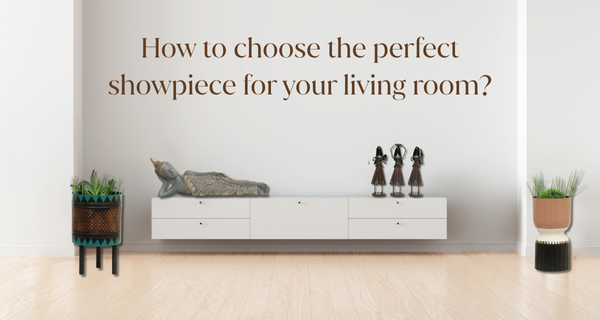5 Timeless Wall Decor Ideas for Small Living Rooms
A small living room does not have to feel cramped or anonymous. With the right wall choices you can create a sense of depth, light, and personality without sacrificing floor space. Walls are powerful design tools: they can reflect light, anchor a seating area, conceal storage, or display what you love. This guide presents five wall decor strategies that work especially well in compact living rooms, explains why they succeed, and gives clear steps so you can implement each idea confidently.
Why pay attention to wall decor in a small living room?
When the floor area is limited, vertical surfaces become prime real estate. Thoughtful wall treatments serve four practical purposes: they increase perceived space by drawing the eye upward or reflecting light; they provide storage or display options that do not take up the floor; they create a focal point that organizes the room visually; and they let you express style without crowding.
For these reasons, wall decor should be chosen with both function and proportion in mind.

Oversized Mirrors: create light and depth
Mirrors reflect light and repeat the room visually, creating an optical extension of the space. This makes a small living room look bigger. Placed thoughtfully, a mirror reduces the sense of enclosure and adds an elegant focal point.
Why mirrors work?
Mirrors multiply daylight and artificial light. The reflected view gives a sense of continuity. A single large mirror or a composed arrangement of mirrors can read as a feature wall while remaining functionally useful.
How to use mirrors in a small living room?
- Opposite a window: position a large rectangular or arch mirror so it faces a main source of daylight. The mirror will bounce light deeper into the room.
- Above a sofa: a horizontal mirror above a sofa elongates the wall and balances the furniture visually.
- Clustered shapes: a group of round or irregular mirrors can create sculptural interest without heavy visual weight.
Proportion and sizing guide
Choose a mirror whose longest side is between one half and two thirds the width of the furniture below it. For a narrow wall, use a tall slim mirror (height greater than width) to emphasize vertical space. Allow at least 5 to8 centimetres of edge between the furniture and the mirror’s frame for breathing room.
Frame choices and finishes
Metallic frames in brass or bronze suit warm palettes and add a refined look. Wood frames bring warmth and suit natural or Swadesi inspired interiors. Minimal black or white frames work with contemporary schemes.
Installation tips
Fix mirrors to studs or use heavy duty wall anchors rated for the mirror’s weight. If the mirror is large, mount it low enough so the bottom edge sits a finger’s width above the back of the sofa or console to sit visually anchored.
Budget and renter options
Large framed mirrors are available as lightweight acrylic alternatives that are easier to hang. A cluster of inexpensive unframed round mirrors can be affixed with picture hanger hooks and rearranged easily.

Statement Art: one bold piece, maximum impact
What kind of art makes a small living room look bigger? Larger, vertical or light toned pieces expand visual space. A single statement artwork avoids clutter while giving the room personality.
Why this works?
Multiple small frames can be cluttered on a small wall. A single or two piece statement anchors the room and gives the brain a single place to rest, which makes the space feel composed and larger.
How to select a statement piece?
- Scale: choose art sized in proportion to the sofa or chair it sits above. A common rule is that artwork should occupy approximately two thirds to three quarters of the furniture’s width.
- Vertical emphasis: vertical canvases lift the eye and impart height.
- Color: in tight spaces, choose artwork that contains subtle echoes of existing colours in cushions, rugs, or lighting to create cohesion.
Types of art that perform well
Large canvases, abstract or photographic, offer modern drama. Textile hangings such as woven tapestries or macrame add texture without bulk. Sculptural wall pieces made from wood, ceramic, or metal provide depth and a tactile feel.
Placement and lighting
Hang artwork at eye level: the centre of the frame should be around 150 centimetres from the floor, or slightly lower above seating. Use a narrow beam picture light or an adjustable wall sconce to highlight the work without overpowering the room.
Buying and budget suggestions
Commission small scale prints of large artworks to achieve scale affordably. Swap out a gallery at intervals to keep the look fresh without constant expense.

Floating shelves: storage that decorates
Floating shelves free floor space and give you a place to display curated objects, small plants, and books while keeping the room airy.
Why floating shelves?
Shelves create usable surface area without the footprint of a cabinet. When styled with restraint, they add layers and break up the wall without imposing heavy bulk.
How to design with floating shelves?
- Staggered arrangement: install shelves at different heights to create movement and avoid a monotonous line.
- Limit depth: for narrow rooms select shelves between 15 and 25 centimetres deep to avoid protruding into walking lines.
- Curate, do not crowd: aim for a mix of objects, one taller object, a stack of books, one rounded vessel and leave negative space.
Material and finish choices
Light wood for warm, natural interiors. Matte black or white for a contemporary graphic look. Glass shelves in very small rooms can help maintain sightlines and feel less intrusive.
Integration with lighting and electronics
Use shelf mounted LED strips or tiny puck lights under each shelf to create soft uplighting and highlight objects. Conceal media wiring by routing cables behind shelves or using decorative baskets to hold remotes and chargers.
Installation and load bearing tips
Fix shelves into studs, or use strong molly anchors for hollow walls. Check the shelf manufacturer’s load rating and avoid overloading with heavy objects.

Accent walls with texture or wallpaper: add depth without volume
Which wallpaper is best for small living rooms? Light coloured, vertically patterned, or subtle textured wallpapers that create vertical lines or gentle contrast are the best options because they add interest while visually increasing height or depth.
Why is choosing right wallpaper necessary?
An accent wall changes perception of room dimensions. Texture or patterned wallpaper adds depth without taking up space, and a single treated wall provides a stage for furniture and accessories.
Accent wall approaches
- Vertical slatted wood or fluted panels emphasize height and lend a refined architectural presence.
- Peel and stick wallpaper with muted botanicals or linear geometry is renter friendly and removable.
- Painted colour block- a soft, warm tone behind the sofa creates depth and feels less permanent.
Choosing pattern and colour
Vertical stripes lengthen walls visually. Subtle geometric or tonal patterns add sophistication without visual noise. Natural textures like linen look wallpaper or stone effect panels work well with neutral palettes.
Installation and placement
Treat the wall behind the main sofa or TV as the natural accent location. If you prefer flexibility, create a framed wallpaper panel rather than papering the entire wall; this can feel like art.
Maintenance and longevity
Washable wallpapers are practical for family homes. Use high quality paste and follow manufacturer instructions to avoid bubbling.

Gallery walls with edited personal collections
How do you make a gallery wall in a small living room? Plan the layout first, maintain a consistent frame palette or mat colour, and keep spacing tight but not crowded. Less is more; an edited selection of images and objects reads as intentional.
Why this works?
A well composed gallery wall can look like a single unified artwork. It offers personality and story without requiring floor space. The key in small rooms is disciplined editing and consistent visual rhythm.
Creating a gallery that fits a small space
- Start with a unifying element: same colour frames, consistent matting, or a repeated motif.
- Use templates: lay frames on the floor to test layouts, or make paper templates to tape on the wall to preview arrangements.
- Mix media: include three dimensional objects such as a small clock, a shallow wooden tray, or a textile swatch to vary texture.
Spacing and alignment guide
Keep spacing between frames between 4 and 8 centimetres for a cohesive look. Align gallery centres to 150 centimetres from the floor for main sightline balance or align the group with the top of the sofa for a traditional look.
Storytelling and seasonal update
Rotate a few pieces seasonally to refresh without rebuilding the entire wall. Include a small label or caption beneath a piece for travel memories or craft provenance, if desired.

How to combine ideas into a cohesive small living room plan?
Use one dominant strategy and one supporting strategy to maintain balance. For example:
- Primary: Accent wall with fluted wood behind the sofa.
Support: One oversized mirror on the adjacent wall to reflect light and the textured surface.
- Primary: Statement art above the seating.
Support: Two staggered floating shelves opposite to display small objects and plants.
Step by step approach
- Measure the wall area before buying art or mirrors.
- Decide on a focal wall, most often the wall behind the sofa or the TV wall.
- Choose the dominant treatment (mirror, art, wallpaper) and then select supporting pieces (shelves, lighting, gallery elements).
- Test with paper templates for scale and arrangement.
- Light the focal point using a wall sconce or picture light to give the wall presence.
- Maintain negative space: leave empty space around the focal area so the wall breathes and the room does not feel busy.
Practical installation, budget and renter friendly tips
Quick installation checklist
- Gather necessary tools: stud finder, level, tape measure, anchors, drill.
- Mark the wall lightly with pencil and use templates or a laser level for precision.
- Use anchor types appropriate for the wall substrate (brick, plaster, drywall).
- For heavy items, mount to studs or use a French cleat system for a secure hold.
Budget strategies
Mix investment pieces with affordable accents: invest in one large mirror or original art, and use economical shelves and frames to fill the rest. Consider high quality prints or artisan reproductions instead of original paintings. Shop textured panels or peel and stick wallpaper for a high impact look at lower cost.
Renter friendly ideas
Use command strips or removable adhesive hooks for lightweight frames and small shelves. Opt for temporary wall treatments such as fabric hangings or removable wallpaper. Lean a large mirror against the wall rather than fixing it if drilling is not allowed.
Living room styling mistakes to avoid
- Overcrowding: filling every inch with frames or objects reduces the sense of space.
- Wrong scale: a tiny frame over a large sofa will look lost; a tiny mirror on a wide wall will read like an afterthought.
- Ignoring light: a beautifully textured wall looks flat in poor lighting; always consider how natural and artificial light will interact with the surface.
- Mismatched visual weight: balance heavier or darker elements with lighter, reflective surfaces so the wall does not feel top heavy.
Quick shopping and styling checklist (one page action plan)
- Measure wall width and height.
- Choose focal wall.
- Select a dominant treatment: mirror, statement art, floating shelves, accent wallpaper, or a gallery.
- Pick two supporting elements: sconce, plant, clock, or small shelf.
- Decide on frame and finish palette.
- Prepare installation tools and mounting hardware.
- Stage objects on the floor before drilling.
- Light the wall with a dedicated fixture.
- Photograph and tweak spacing after 48 hours.
Conclusion
A small living room becomes distinctive and generous with considered wall decisions. Oversized mirrors, a single bold artwork, thoughtfully installed floating shelves, a textured accent wall, and an edited gallery each offer reliable routes to more inviting, stylish interiors. The most important rule is balance: select a main strategy that fits your daily needs, then add one supporting treatment to create depth and cohesion. With the right proportions, lighting and restraint, your walls will transform into the elements that make the room feel larger, brighter and unmistakably yours.








